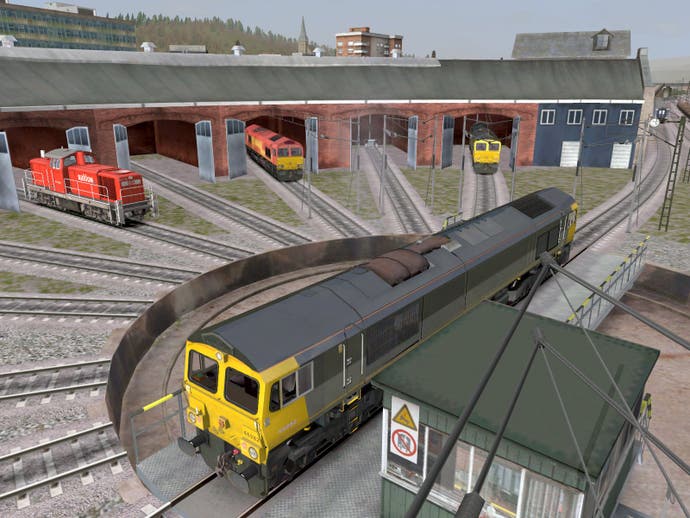Why I Love... Train Simulators
The attraction of traction.
I've been trying to persuade PEGI to add a new warning icon to their ratings system for the past ten years. If a box came emblazoned with an anorak symbol, the potential buyer would know that "A pre-existing interest in the theme is essential for the enjoyment of this product".
Games carrying the anorak icon would include anything with "manager", "carp" or "Harry Potter" in the title (so forthcoming EA offering Harry Potter's Extreme Carp Manager would be a definite), along with all train simulators.
If you're the sort of person who can sit on a station bench reading a book and not look up when a freight train thunders past, it's highly unlikely the likes of RailWorks, Microsoft Train Simulator, Trainz and OpenBVE will ever shunt their way into your affections. There's nothing the developers can do to change this. The die has already been cast.
Parents and peers made me a train simmer long before train sims existed. Train-shaped toys and loco-filled picture-books were pressed into my pudgy hands as soon as they were strong enough to hold them. During holidays, I was taken to preserved railways and made to stand very close to pungent green dragons that oozed oil and coughed smoke.
A crucial moment in the indoctrination process occurred when I was around ten years-old. While waiting for a train from London to York, I was encouraged to buy a little pocketbook filled with thousands of five-digit numbers.

Before you sneer, scoff and recall a hundred lazy trainspotter jokes, ask yourself if hunting locos the way a twitcher hunts birds or an Afrika player hunts gnus is any more ridicule-worthy chasing a ball around a field. For that matter, is it really more senseless than spending your leisure-time moving pixels round a TV screen?
Ponder on why influential sections of the media seem to regard a love of hard-working 3000hp locomotives as the mark of a loser, while the love of decadent 1000hp automobiles is declared to be the duty of every red-blooded male.
For me, trainspotting has only positive associations. It gave my juvenile self a first taste of independent travel and fostered a couple of good friendships. Today, it remains one of the most extraordinary games I've ever played.
Imagine an unscripted, massively multiplayer odyssey that encourages exploration and rewards patience and vigilance. Eyeballing something rare or unexpected while transpotting is as satisfying, in its own peculiar way, as solving a puzzle in The Hobbit or being the last player left alive in a game of British Bulldog.

A train sim which could capture the bizarre network-trotting treasure-hunt that is trainspotting would be remarkable indeed. The closest thing we have, sadly, is a text-based loco-bashing game called Hellfire.
What train sims offer the enthusiast is the ability to time-travel. All rail fans over 21 are hopeless nostalgics, convinced that the railways of today lack the character and charm of those belonging to some personal Golden Age.
Sims like RailWorks 2 and Microsoft Train Simulator make it possible to turn back the clock, undo the vandalism of Dr. Beeching and transmuting the forlorn hulks of Barry and Berry into the proud Goliaths they once were. You can stand in the same place you stood in 2002, or 1982, or 1962, and see the same sleek stallions and grimy workhorses storming past. The sims let you grab the reins.
At first glance, the challenge of operating a loco might seem slight in comparison with that of piloting a plane or driving a race car. There's no denying there's nothing in the likes of RailWorks which is half as demanding as mastering the avionics of a Ka-50 Black Shark or snatching victory in an iRacing open-wheeler, but to dismiss the genre because of this would be a mistake.
